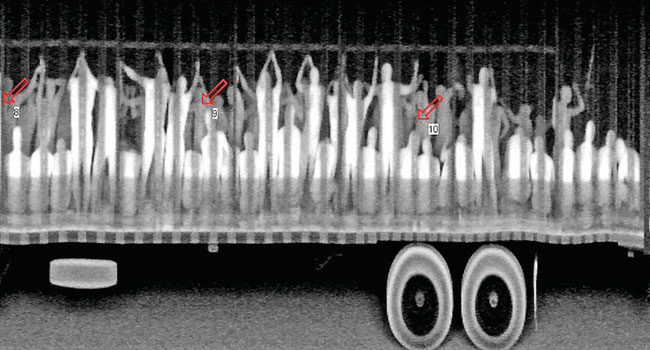
COVID-19 Spread Doesn’t Slow Down Human Smugglers
- By Ralph C. Jensen
- May 20, 2020
Human smugglers continue to plague law enforcement and society at large, despite the COVID-19 pandemic and without regards to several Customs and Border Protection policies and travel restrictions aimed at preventing the spread of the disease. Smugglers continue to place migrants in harm’s way.
Commercial tractor-trailers remain the transportation of choice to smuggle large number of people into the United States, especially at CBP’s Rio Grande Valley (RVG) and Laredo (LRT) sectors in Texas. Both have been hot spots to loaded tractor-trailers. The two sectors have seen 28 tractor-trailer cases since March 21 when COVID policies were put in place.
“The risk posed by these tractor-trailer loads increases dramatically during the COVID-19 pandemic. In recent weeks, our agents have discovered more than 492 people concealed in these dangerous and life threatening conditions,” said Rodney Scott, chief of the United States Border Patrol, referring to the number of migrants encountered by RGV and LRT agents in tractor-trailer cases since March 21.
Smugglers may demand as much as $6,000 and up to $12,000 per person to attempt to be smuggled into the United States, via tractor-trailers. The journey is not only expensive from a financial standpoint, but it has the potential to cost them their lives. In a particularly notorious example of a failed tractor-trailer smuggling attempt in July 2017, authorities discovered more than 100 migrants crowded into a trailer in a Walmart parking lot in San Antonio, Texas. Ten people died and another 39 were hospitalized for dehydration. The driver was sentenced to life in prison.
Recently, on May 11, Border Patrol agents encountered 49 aliens concealed in a tractor-trailer at the Interstate 35 checkpoint north of Laredo, Texas. At the time of the encounter, the trailer was locked, and the passengers had no safety restraints and no means of escape. “This smuggling tactic is putting lives at risk—the lives of the migrants, our agents, and the American public—all for the sake of profit,” Scott said.
Migrants attempting the dangerous journey to illegally enter the United States travel without access to proper medical care and personal protective equipment to protect themselves and others, all while traveling through multiple countries before reaching the United States. The smugglers often force the migrants into cramped compartments and unsanitary stash houses along the journey.
The Border Patrol is leveraging its intelligence gathering and investigative capabilities, which includes working with partner agencies around the country and world. Together these efforts keep our nation safe by identifying, prosecuting, and dismantling the criminal organizations and networks who endanger the lives of so many through human smuggling.
About the Author
Ralph C. Jensen is the Publisher/Editor in chief of Security Today magazine.